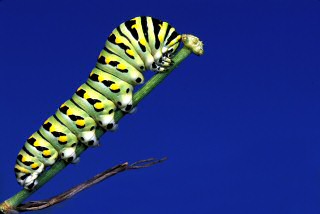County Road 550, Woodbine, NJ 08270
Phone: (609) 861-2404
www.njparksandforests.org
NJ Department of Environmental Protection
From Route 55 South: Follow Route 55 South until it ends and becomes Route 47. Follow Route 47 for 2.5 miles and bear Left onto Route 347 when it splits and Route 47 is to the Right. Continue along Route 347 for 5.5 miles
and turn Left onto CR 550/Spur/Hands Mill Rd. (This turn is around a bend, just after you pass Hands Mill Pond.) Follow CR 550/Spur/Hands Mill Rd. for 3.25 miles to a Stop sign, and turn Left. Turn Right at the blinking light, and the entrance is located approximately 2 miles ahead on the Right. The office is immediately to your Right upon entering. You can also reach Belleplain from the Garden State Parkway Exit 17/Sea Isle City. Turn Left at the end of the exit ramp toward Route 9. Turn Right onto Route 9 and continue for 1⁄2 mile. Turn Left onto CR 550
and proceed approximately 8.5 miles through the town of Woodbine. When you reach the stop sign with a market to your Right, turn Left and continue to the blinking light. Turn Right onto CR 550. The entrance is 1.3 miles on the Left, and the office
is immediately on the Right. Map
Any of the three nature trails around Lake Nummy provides a pleasant and relaxing walk. Interpretive signage tells visitors about local habitats and their inhabitants.
Tom Field Road (sometimes referred to as Narrows Road) between Sunset Road and Route 347, is a two-mile stretch of unpaved trail that is off the beaten path. Several walking trails leading south from the road are ideal for short (ie. 1/2 hour) walks to interesting vistas and different habitats. The first, about
0.3 miles from Sunset Road, leads to a beaver pond that is a favorite locale for summer-nesting Prothonotary Warbler. The second, approximately 0.3 miles from Route 347, leads to a parking lot and boat launch on the edge of East Creek Pond. Bald Eagle and various ducks and turtles are
frequently seen here.
 |
| Black Swallowtail Butterfly caterpillar | Bill Garwood |
| |
| | Belleplain State Forest is a magnificent tract of 22,000+ acres with perhaps the most diverse natural habitats found anywhere in New Jersey. Containing dense and open hardwood and pine forests, white cedar and hardwood swamps, tidal and non-tidal wetlands, grassy fields and lakes, Belleplain provides a home to an amazing array of mammals, birds, reptiles, butterflies, insects and fish. Human activity in the Forest centers on The Lake Nummy Recreational Area, with extensive campgrounds, picnic areas, swimming facilities, boating, well-marked hiking, bicycle and horseback riding trails and a network of paved and unpaved roads developed in the 1930’s by the Civilian Conservation Corps (CCC). Lake Nummy, covering 26 acres, is a converted cranberry bog created by the CCC and named for the last Lenni Lenape Indian chief. At any time of the year, Belleplain will provide visitors long-remembered encounters with nature.
For many birders, at least one trip to Belleplain every spring is a “must.” The forest understory, featuring emerging wildflowers with blooming dogwood, followed by blooming mountain
laurel and rhododendron, provides a colorful background for viewing the dozens of newly
arriving passerines, returning from their winter homes in southern United States, Mexico, and Central and South America. In early May, the
forest begins to ring with the songs of the
Wood Thrush, Ovenbird, various woodpeckers, tanagers, cuckoos, and a variety of wood
warblers, some of which are stopping in Belleplain before they continue their migration
to more northerly nesting grounds.
Non-hibernating animals search for food during winter, leaving tracks in the snow. By
mid-January, Great Horned Owl are calling and breeding and Bald Eagle do the same shortly thereafter. Belleplain Forest remains open for
hiking and camping. After the lakes freeze over, ice-fishing is an option, and after a snow fall, cross-country skiing is popular.
Animals are becoming more active, plant life is emerging, frogs, snakes and salamanders are coming out of their winter sleeps, and many birds, depending on species, are migrating into, through, or out of the forest while others — the year round residents — are mating, building nests and beginning the process of raising
their young.
Animals are active throughout the
summer, including both nocturnal and diurnal species. The birds in the forest are tending their young and are more difficult to see, due to the dense foliage. Turtles, frogs and salamanders, on the other hand, are more easily found. Whether camping and hiking the trails, fishing on East Creek Pond, or swimming and canoeing on Lake Nummy, this is a wonderful time of year at Belleplain. Take precautions for biting insects, ticks and chiggers.
As the foliage turns, southbound migratory birds begin to appear. Animals in the forest begin preparations for winter, growing heavier fur coats and settling on locations to spend the winter nights ahead. By mid-September many songbirds, such as the tanagers, wood warblers and cuckoos, which spent the summer in the forest, have departed for southern climes to spend the winter. They are replaced by winter residents including Dark-eyed Junco and White-throated Sparrow.
|